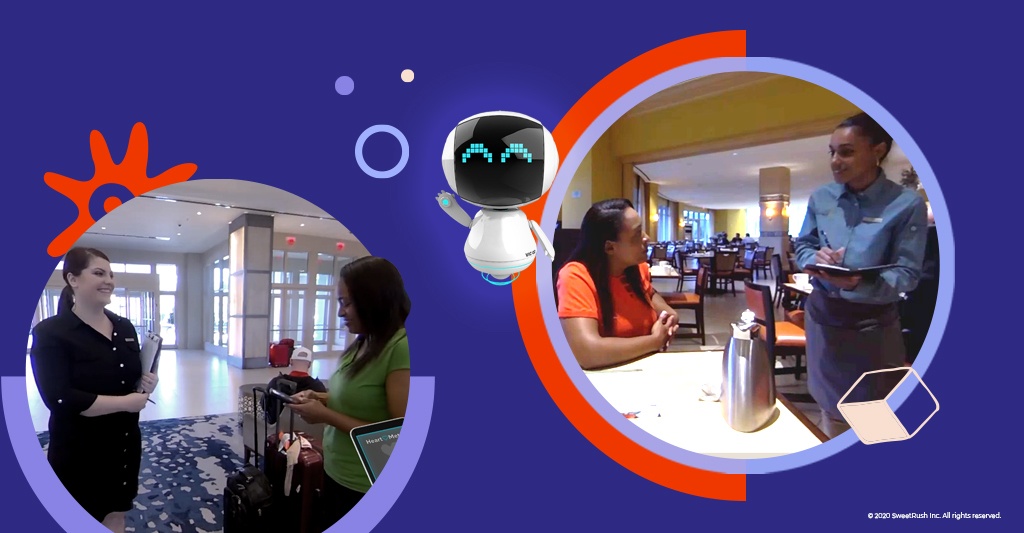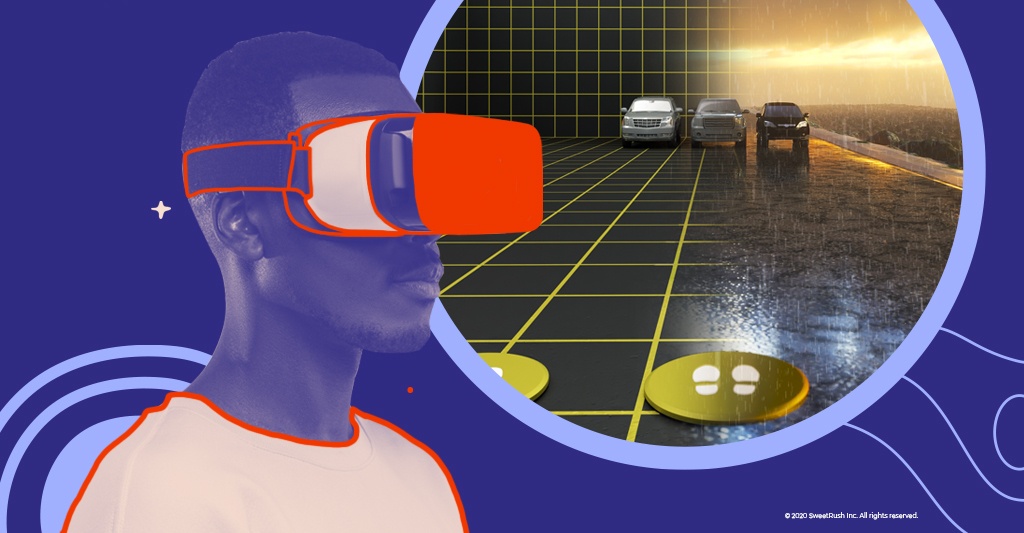VR: The Perfect Medium For Scenario-Based Learning
Scenario-based learning in VR training combines two powerful and effective Instructional Design techniques: practice that’s as close to the real world as possible and storytelling. Scenarios allow us to move beyond knowledge transfer into judgment-making, critical thinking, and decision-making, all of which can lead to better application of what’s learned back on the job.
As technology-enabled learning has advanced, more and more tools have become available to Instructional Designers to create scenario-based learning. The result? More engaging and realistic situations, more sophisticated activities, and better ways to indicate the consequences of decisions and actions.

Today—lucky us!—there’s a new tool available, and it’s taking the feeling of immersion in a situation to a whole new level. VR training is a perfect medium for scenario-based learning for many reasons:
- Immersion
When learners put on a headset, they are transported to a virtual world in which the scenario takes place. Unlike in eLearning and other modalities, they are completely focused on the experience and scenario they are in, capturing their full attention. - Presence
Beyond simply attention, there’s an emotional component to VR—learners feel they are in the scenario. Research is showing the identification and feeling of presence within VR are evidenced in the brain, which can help lead to feelings of empathy [1]. Combined with authentic and relatable storytelling, this makes VR training a powerful tool for creating an emotional connection with the learner, which helps increase retention. - Data tracking and feedback
What if you could track learners’ body movements, voice tone, and emotion in scenario-based learning? It’s all possible with VR training. Learners can get real-time feedback on their choices and actions within the scenario-based learning in VR. - Multi-learner experiences
As we look for better alternatives to in-person training, VR training again comes into focus, allowing for multiple learners to share the same virtual world experience. And, instructors can take control and trigger changes to the scenario in real time, keeping learners on their toes!
Let’s take a look at 3 examples of how different organizations and industries have implemented scenario-based learning in VR training programs to achieve very different objectives.
1. Customer Service VR Training Using Learning Scenarios

The key to hospitality and exceptional service is having empathy for guests, and a global travel company had tried to teach empathy with traditional role plays for years. It wasn’t working. Working together, we found a new way to elicit understanding and build empathy—with VR.
We could have simply converted the role play from face-to-face to within VR; the technology exists to do so. But we discovered a better way: have the learner actually experience what it’s like to be a guest.
We created a scenario-based VR training program that links 5 guest situations (e.g., a long line at the counter, less-than-attentive service in a restaurant) in an overarching story. In each scenario, learners experience 3 different ways that a hospitality worker tries to remedy the situation and they must pick the best one. They must also identify how they feel after each less-than-stellar experience.
Emotional connection, authentic response—as close to the real-world guest experience as possible. Addressing the same learning objective (to build empathy) in an innovative way that trumps the traditional role play.
2. Education-Based Marketing VR Training For Sales Associates Using Scenarios

Car and truck technology does not necessarily evoke a memorable and emotional connection in sales associates. Traditionally, introduction to new products happens via a sales sheet—a static paper with a list of features, benefits, and target customer profiles.
Working with a top player in the automotive space, we created a VR program for a new product launch that brings the technology and specs to life. Learners enter a virtual world: a vast expanse of road that’s wet from recent rain. Three trucks come barreling toward them—will they stop in time? One will, showcasing the amazing stopping power of this truck!
Sellers have now experienced this critical feature in a way they never could by seeing it on a sales sheet. Once they catch their breath!
3. Safety VR Training Using Scenario-Based Learning In Healthcare

Healthcare workers face dangerous situations and aggressive behavior every day, and critical skills are needed to de-escalate these situations. A healthcare worker’s words, tone of voice, body language, and facial expressions can impact the way a person under stress will respond. But how can you train someone to be in a dangerous situation without actually placing them in danger?
You need a training solution that creates an emotional impact, induces empathy, and encourages a behavioral shift in how a person communicates and presents themselves. We worked with this Texas-based healthcare organization to take existing in-person training, including role plays, and create a VR component for its blended learning program.
Healthcare workers are presented with all-too-real situations, like a patient experiencing extreme stress. Learners take the appropriate steps to calm the patient down and defuse the situation while confronting verbal assaults and erratic behavior.
The organization now has a scalable and safe environment for healthcare workers to learn and practice these critical skills.
Not A One-Size-Fits-All Solution
The potential for VR training is seemingly limitless. As these 3 use cases demonstrate, there is an enormous breadth of learning experiences that VR can effectively support. It’s important to remember that each organization was facing industry- and learner-specific training challenges. In each case, VR training proved to be a viable solution, enabling L&D pioneers at these organizations to create something new and uniquely effective for their audiences.
As you look to integrate VR into your programs, talk with a vendor who has experience with custom VR training solutions. One that can help you navigate the capabilities of VR training, map them to your learning requirements and make VR an innovative facet of your blended learning programs.
Download our eBook Your Guide To VR Training Programs: Virtual Reality For Our New Reality. Filled with tips and success stories, this comprehensive guide reveals the steps to building effective scenario-based learning programs at your organization. Join the webinar VR Training Program Case Study to learn all you need to know through a success story!
References:


